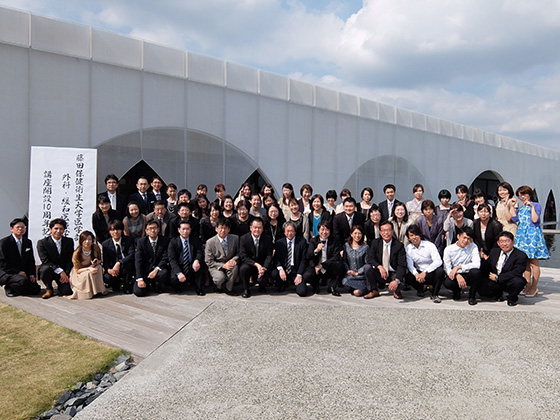Palliative care course history
In 1987, palliative care units (20 hospital beds in 2015) were established in the Nanakuri Memorial Hospital and was later approved as the first palliative care unit in university hospitals of Japan in 1997.
In 2003 the department became the first department of palliative medicine in the medical schools of Japan.
Since October 2003, palliative care course has focused on three main practices: ①Surgery ②Palliative care, and ③Nutrition Support Team(NST).
The aim is to practice medical care, to improve education and to carry out studies consistently on the axis of these three themes.

Surgery
We address the practice of new surgery which incorporate palliative care into cancer surgery care.
Palliative care(terminal medical care)
Our course introduces a new system of palliative care to achieve six targets (six pillars) in consideration of the problems of past palliative care.
- Providing a healing environment
- Practicing holistic medicine
- Establishing palliative care NST (Nutrition Support Team)
- Building community
- Introducing oncology
- Creating self-sustaining community cooperation
Through our palliative care, we have improved the Quality of Life (QOL) of many patients and have made painless and prolonged period of oral treatment possible.
Nutrition Support Team(NST)
We introduce nutritional management as a foundation for our medical care which was not given much consideration in the past. We make efforts to construct systems which provide nutritional management through team medical care which involves doctors, nurses, pharmacists, nutritionists, medical technologists and rehabilitation engineers working as one.
In 2006, the Nanakuri Memorial Hospital Palliative Care Unit received its certification in “palliative care” conferred by Japan Council for Quality Health Care.